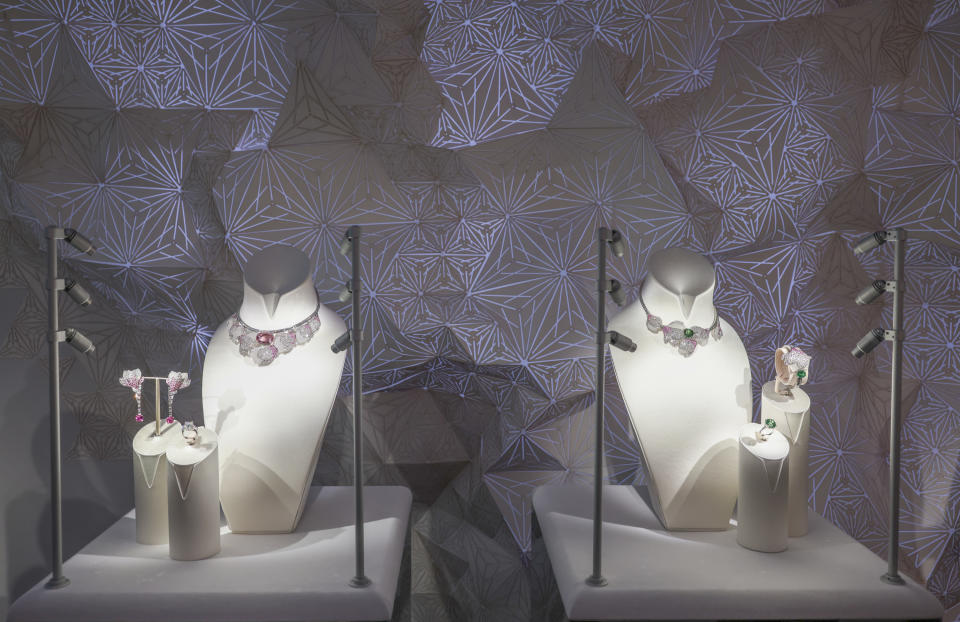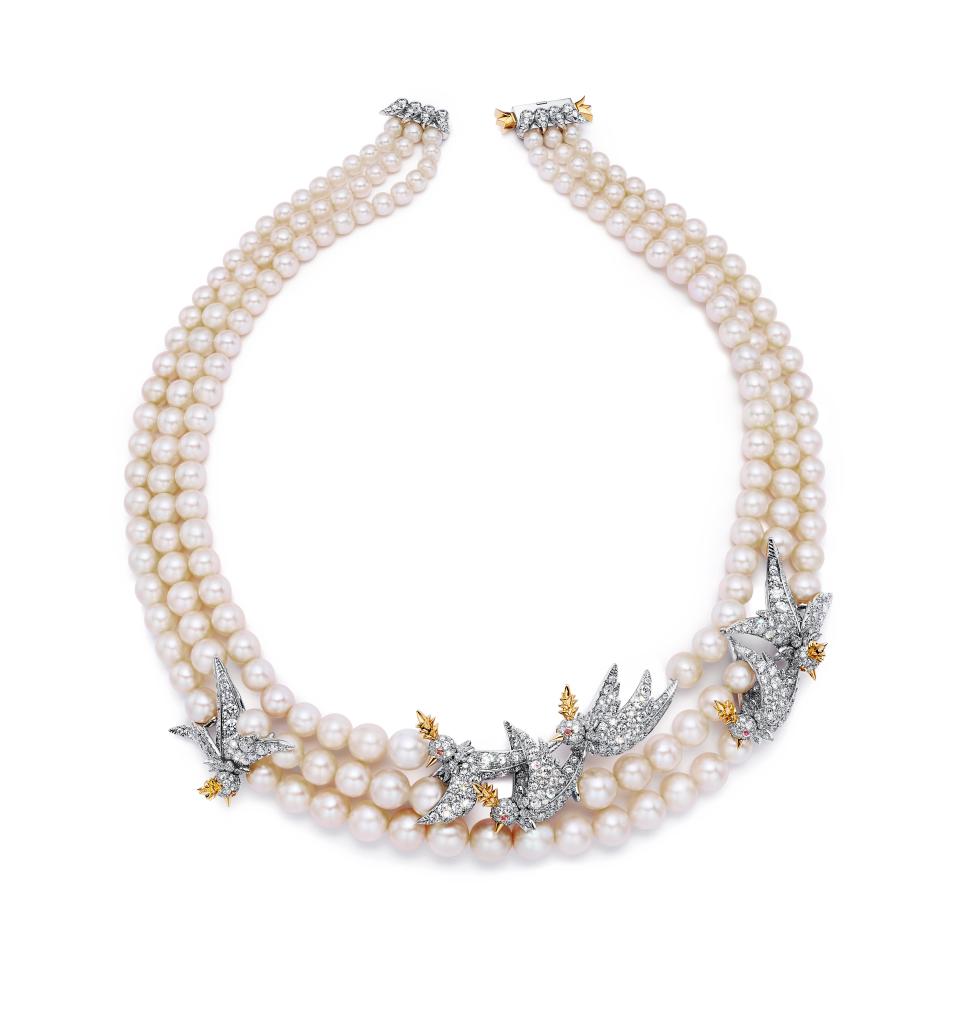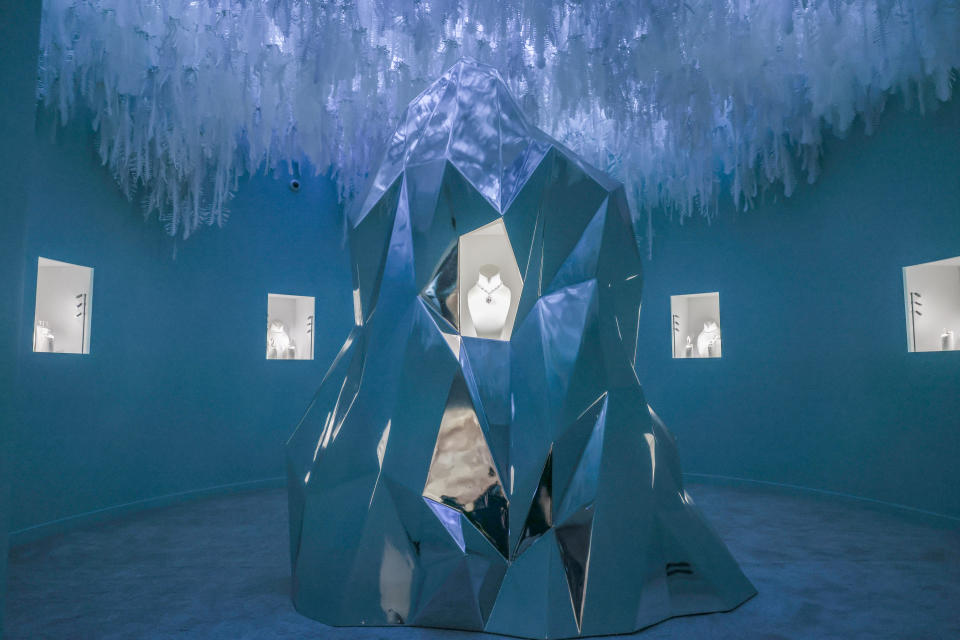EXCLUSIVE: Inside Tiffany & Co.’s High Jewelry Acceleration Plan

Tiffany & Co.’s high jewelry ambitions are only just revving up. According to chief executive officer Anthony Ledru in a recent sit-down conversation, the jeweler will continue a global rollout of experiential sales events and imaginative designs at a heightened pace.
In January, parent company LVMH Moët Hennessy Louis Vuitton revealed in its 2022 annual earnings report that Tiffany doubled its high jewelry revenue within the fiscal year. Ledru seems to consider this a good start.
More from WWD
“We basically took our blue boxes to the world. In 2021 it was the first time Blue Book was international [in more than a decade], it went to Shanghai, which was a big success. This year will be back to New York City [at the company’s renovated Fifth Avenue store] — and it will be a traveling collection. The world has changed and it’s something we will continue to accelerate in the coming months,” Ledru said in his corner executive suite, where his screensaver flashes with K-pop stars that serve as some of the brand’s key ambassadors.
Evidence of this plan was presented earlier this month in Park City, Utah, where Tiffany held its first “Diamonds and Wonders” high jewelry event. The initiative was built around a glacier theme that spoke to Park City’s ski resort landscape as well as the numerous important white diamonds presented in the activation’s case lines.
“Diamonds and Wonders” displayed a “cross-section” of high jewelry pieces from Tiffany’s assorted collections. It placed a heavy emphasis on white diamonds — including a necklace set with a 100-plus carat stone that was cut to the same proportions as the yellow Tiffany Diamond.
The event concept will continue on to Shanghai on April 13 — offering the pieces to a new market. A follow-up event is being planned for Sydney in May.
Tiffany is not the only jeweler chasing high jewelry sales. The field has become a gold rush — flush with big-ticket clientele seeking innovative designs and valuable stones. For some collectors, the category has become a highly aesthetic bank account — mirroring the way in which high jewelry was collected during the industry’s golden age in the mid-to-late 19th century.
Ledru, a jewelry history buff, showed off Tiffany’s lineage in the category with a conference table filled with archival diamond pieces from that time — mostly items from high society, along with a brooch previously owned by Empress Eugenie.

While the jewelry space has focused on colored diamonds and gemstones for the last five years, Ledru said that white diamonds — like those shown in Park City — have a long-lasting place within Tiffany’s history. He also stressed that Tiffany’s high jewelry diverges from its competitors’ because exceptional stones lead the jeweler’s designs as a focal point, instead of being tacked on as an expensive decoration.
When asked how the market for high jewelry has exploded so quickly and who these clients are, Ledru said, “They are everywhere — they used to be in the U.S., Singapore, the Middle East. Now high jewelry clients are in Paris, London, everywhere — more than before. I believe the creation of wealth over the last 10 years has been extraordinary.”
In an effort to capture a slice of the craze, Tiffany appears to be holding high jewelry events or initiatives nearly every month.
Now part of LVMH’s watch and jewelry division under Stéphane Bianchi, Tiffany is adopting some of the strategies of its sister brands in the group. Prior to LVMH’s acquisition, Tiffany usually held only a few high jewelry events per year with a quieter approach. Now, the jeweler’s annual Blue Book collection will be supplemented by smaller traveling capsules with glitzy displays, like the one seen in Park City.
“There is a strong appetite toward high jewelry and Tiffany was perhaps a bit sleepy in the past but we have gone from one [collection] to multiples of one,” said Ledru.
He said that the Blue Book will remain a special event because it is considered Tiffany’s “haute couture show.”
Victoria Reynolds, Tiffany’s chief gemologist, is responsible for overseeing the acquisition of precious stones, and also travels to events where she interfaces with clients about the designs available for purchase. She acknowledged that a quicker pace “adds just a little bit more pressure” to her job.
“That is what also makes finding these incredible gemstones so special. I am constantly on a quest to find perfect diamonds and gemstones for our jewelry collections. I travel the world, searching for stones that meet our exacting standards,” she added.

According to Ledru, the designs finding the most popularity with clients are often from Tiffany’s Schlumberger collections. Shortly after LVMH acquired Tiffany in January 2021, the jeweler’s new leadership — including Ledru and executive vice president for product and communications Alexandre Arnault — placed new emphasis on archival Schlumberger designs that were originally conceived in the midcentury. Ledru said that Schlumberger will now become an even larger focal point in Tiffany’s high jewelry collections.
Ledru called Schlumberger’s Bird on a Rock, a brooch design that was originally created in 1965, “a gift when we arrived [at the brand].” The design entails a plucky, firebird-type creature perched atop a significant precious stone in lieu of a tree branch.
“We took Bird on a Rock and it got off the rock, so to say. It exploded. There is a very impressive waiting list at all price points, with the entry level at around $75,000 and also at the highest end, which is about $1 million-plus.”
In February, Tiffany showed a new take on the design, called Bird on a Pearl, incorporating Gulf region pearls instead of faceted stones. Ledru said that about 70 percent of the collection sold out at the collection’s launch event in Qatar.
The Bird on a Pearl range also provided a preview of Tiffany’s ultimate plans for Schlumberger’s inimitable design.
“Who buys brooches? About 10 percent of high jewelry purists. So we will be putting the bird on earrings, bracelets and necklaces,” Ledru said.
In the Bird on a Pearl collection that meant new iterations of the bird — sometimes forward-facing or midflight, and set as a pendant on a delicate, diamond-flecked chain or among a flock of its fellow species, flying en route across a cluster of pearl strands.
For most shoppers, high jewelry like the pieces shown at Tiffany’s events are, at face value, beautiful objects behind glass and the highest expression of a brand that they may interact with through marketing campaigns or by buying into through less pricey collections. But for a select group of wealthy clients, these designs are a reality.
Ledru seems mesmerized by this unique cultural interplay. Since landing at Tiffany he has been obsessed with finding the right alchemy to ensure that Tiffany is “a magical place that brings the dream,” across all demographics. In high jewelry, there is sales growth to be made at the highest level while also enabling aspiration among a wider consumer base.

While many see the jewelry as a dream, there is an increasing number of consumers who find those products to be within their means.
He grouped the market for high jewelry into two main parties of consumers. “One are purists and interested in heritage. They want to be part of that club of brands that own heritage with a clear style, and there are four or five brands in the world,” Ledru said.
He continued, “The second [group] is new — they are younger and buy in a cool way. They are in China, parts of Southeast Asia, and other parts of the world — they buy high jewelry from fashion brands. So it’s Tiffany’s cool factor that appeals to them.”
Tiffany, in Ledru’s mind, is at the crossroads of these two consumers. “There is this old-world history, but Tiffany is also part of the new world with its New York spirit and being a cultural phenomenon,” he contended.
Ledru may be enthusiastic about the potential of the category, but he also cautioned that Tiffany’s intentions in the space are measured. “I don’t believe in growing too fast on high jewelry. The beauty of making high jewelry is scarcity, that it’s difficult to craft by nature. It’s why people love high jewelry or watchmaking because it’s a beautiful creation that you have to get or it’s gone.”
This high jewelry growth takes place amid a very busy period for the jeweler. In late April, Tiffany will finally reopen its new Fifth Avenue flagship following a four-year renovation. The store will include a whole floor dedicated to high jewelry and will host Tiffany’s 2023 Blue Book collection kickoff event sometime this summer.
Best of WWD


